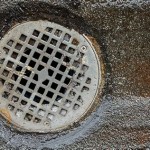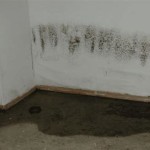How To Get Rid Of Spiders In Your Basement: A DIY Guide
Basements, with their cool temperatures, dark corners, and often abundant moisture, are prime real estate for spiders. These arachnids seek out quiet, undisturbed areas where they can build webs and find a steady supply of insects to feed on. While most basement spiders are harmless, their presence can be unnerving, and their webs can create a dusty, neglected appearance. Fortunately, a proactive and informed approach to DIY spider control can effectively reduce their numbers and create a less hospitable environment for them in your basement.
This article provides a comprehensive guide to identifying, preventing, and eliminating spiders in the basement using readily available materials and proven techniques. The emphasis is on creating a sustainable solution that minimizes the need for harsh chemicals and focuses on long-term prevention.
Identifying the Problem: Understanding Spider Infestations
Before embarking on a spider control mission, it's essential to understand the nature of the infestation. Spiders are generally beneficial creatures, preying on insects that may be more problematic. However, an excessive number of spiders indicates an underlying issue, such as a readily available food source or favorable environmental conditions.
First, identify the type of spiders frequenting the basement. Common basement spiders include cellar spiders (also known as daddy longlegs), house spiders, wolf spiders, and occasionally, hobo spiders or other outdoor varieties that have wandered inside. Cellar spiders are easily recognized by their long, thin legs and haphazard webs. House spiders, often larger and browner, build funnel-shaped webs. Wolf spiders, unlike many others, actively hunt their prey and do not build webs. Identifying the species can help determine the best course of action, as some spiders are more susceptible to certain control methods than others.
Secondly, assess the extent of the infestation. Are there just a few stray spiders, or are there webs in every corner and spiders actively crawling around? A larger infestation will require a more comprehensive approach than dealing with a few occasional visitors. Look for egg sacs, which are often small, silken pouches attached to webs or hidden in cracks and crevices. Finding egg sacs indicates a breeding population and the potential for a rapid increase in the spider population.
Finally, try to determine the source of the spider activity. Where are the spiders entering the basement? Are there cracks in the foundation, gaps around windows or doors, or openings around pipes and utility lines? Identifying these entry points is crucial for sealing them and preventing future infestations. Also, consider the overall environment of the basement. Is it damp and cluttered? Does it have a lot of other insects present? Addressing these underlying factors can significantly reduce the attractiveness of the basement to spiders.
Prevention is Key: Creating an Unfavorable Environment
The most effective way to control spiders is to prevent them from entering and establishing themselves in the basement in the first place. This involves a multi-pronged approach focused on eliminating food sources, sealing entry points, and creating an unfavorable environment for spiders to thrive.
Controlling insects is paramount. Spiders are predators, and they are drawn to areas with a plentiful supply of insects. To reduce their food source, implement general insect control measures. This includes removing standing water, which can attract mosquitoes and other insects. Repair leaky pipes and ensure proper drainage around the foundation. Clean up food spills promptly and store food in airtight containers. Consider using insect traps or baits specifically designed for common basement insects, such as ants, cockroaches, and crickets. Reducing the insect population will naturally reduce the spider population.
Sealing entry points is another critical step in preventing spider infestations. Carefully inspect the basement for cracks in the foundation, gaps around windows and doors, and openings around pipes and utility lines. Seal these openings with caulk, expanding foam, or weather stripping. Pay particular attention to areas where pipes and wires enter the basement, as these are common entry points for spiders and other pests. Install door sweeps on exterior doors to prevent spiders from crawling underneath. You can also install fine mesh screens over windows and vents to exclude insects and spiders.
Reduce clutter in the basement. Spiders prefer dark, undisturbed areas where they can build webs and hide. Remove boxes, piles of clothing, and other clutter that provide hiding places for spiders. Organize storage items and store them in sealed plastic containers. Regularly vacuum or sweep the basement to remove dust, cobwebs, and potential spider egg sacs. Keeping the basement clean and uncluttered will make it less attractive to spiders and easier to spot any new infestations.
Maintain a dry basement environment. Spiders, like many other pests, are attracted to moisture. Use a dehumidifier to reduce humidity levels in the basement. Ensure proper ventilation to prevent moisture buildup. Repair any leaks in the foundation or plumbing. A dry basement is less appealing to spiders and other pests.
DIY Spider Removal Techniques: Eliminating Existing Spiders
Once preventive measures are in place, it's time to address any existing spiders in the basement. There are several DIY methods that can effectively eliminate spiders without resorting to harsh chemicals or professional pest control services.
Manual removal is a simple yet effective way to get rid of individual spiders and their webs. Use a vacuum cleaner with a hose attachment to remove spiders, webs, and egg sacs. Pay particular attention to corners, cracks, and crevices where spiders are likely to hide. Dispose of the vacuum bag immediately after cleaning to prevent spiders from escaping. Alternatively, use a broom or duster to knock down webs and then crush or capture the spiders. Be careful when handling spiders, especially if you are unsure of their species, as some spiders can bite.
Diatomaceous earth (DE) is a natural, non-toxic powder made from fossilized algae. It is effective at killing spiders and other insects by dehydrating their exoskeletons. Sprinkle a thin layer of DE in areas where spiders are commonly found, such as along baseboards, in corners, and under furniture. Be sure to use food-grade DE, as other types may be harmful to humans and pets. DE is most effective when dry, so avoid using it in damp areas. Reapply DE periodically as needed.
Essential oil sprays can repel spiders and other insects. Mix a few drops of peppermint, tea tree, eucalyptus, or citrus essential oil with water in a spray bottle. Spray the mixture around windows, doors, and other entry points, as well as in areas where spiders are commonly found. Essential oils are a natural and effective alternative to chemical insecticides, but they may need to be reapplied frequently to maintain their effectiveness. Some individuals may be sensitive to certain essential oils, so it's important to test a small area before spraying extensively.
Vinegar is another natural repellent that can be used to deter spiders. Mix equal parts white vinegar and water in a spray bottle. Spray the mixture around windows, doors, and other entry points, as well as in areas where spiders are commonly found. Vinegar has a strong odor, so it's important to ventilate the area after spraying. Vinegar is a safe and effective alternative to chemical insecticides, but it may need to be reapplied frequently to maintain its effectiveness.
Sticky traps can be used to capture spiders and other insects. Place sticky traps in areas where spiders are commonly found, such as along baseboards, in corners, and under furniture. Check the traps regularly and dispose of them when they are full. Sticky traps are a simple and effective way to monitor spider activity and capture spiders without using chemicals. However, they may not be ideal for homes with small children or pets, as they can be messy and potentially harmful if ingested.
Regularly inspect the basement for signs of new spider activity. Look for webs, egg sacs, and live spiders. Promptly remove any new infestations to prevent them from establishing themselves. Consistent monitoring and maintenance are essential for long-term spider control.
When implementing the above methods, remember to wear appropriate personal protective equipment, such as gloves and a dust mask, to protect yourself from potential irritants and allergens. Always follow the manufacturer's instructions for any products used.

How To Get Rid Of Spiders In Your Basement

How To Keep Spiders Out Of Your Basement Extermpro

How To Get Rid Of Cellar Spiders

How To Get Rid Of Spiders In Your Basement Family Handyman

How To Get Rid Of Spiders In Your Basement Youtube

10 Tips To Get Rid Of Spiders In Your Basement

Get Rid Of Basement Spiders Green Giant Home Commercial

How To Get Rid Of Spiders Home Remedies Naturally

How To Get Rid Of Spiders In Your Nc Home Diy Spider Control

Natural Ways To Keep Spiders Out Of Your House Farmers Almanac Plan Day Grow Life
Related Posts







